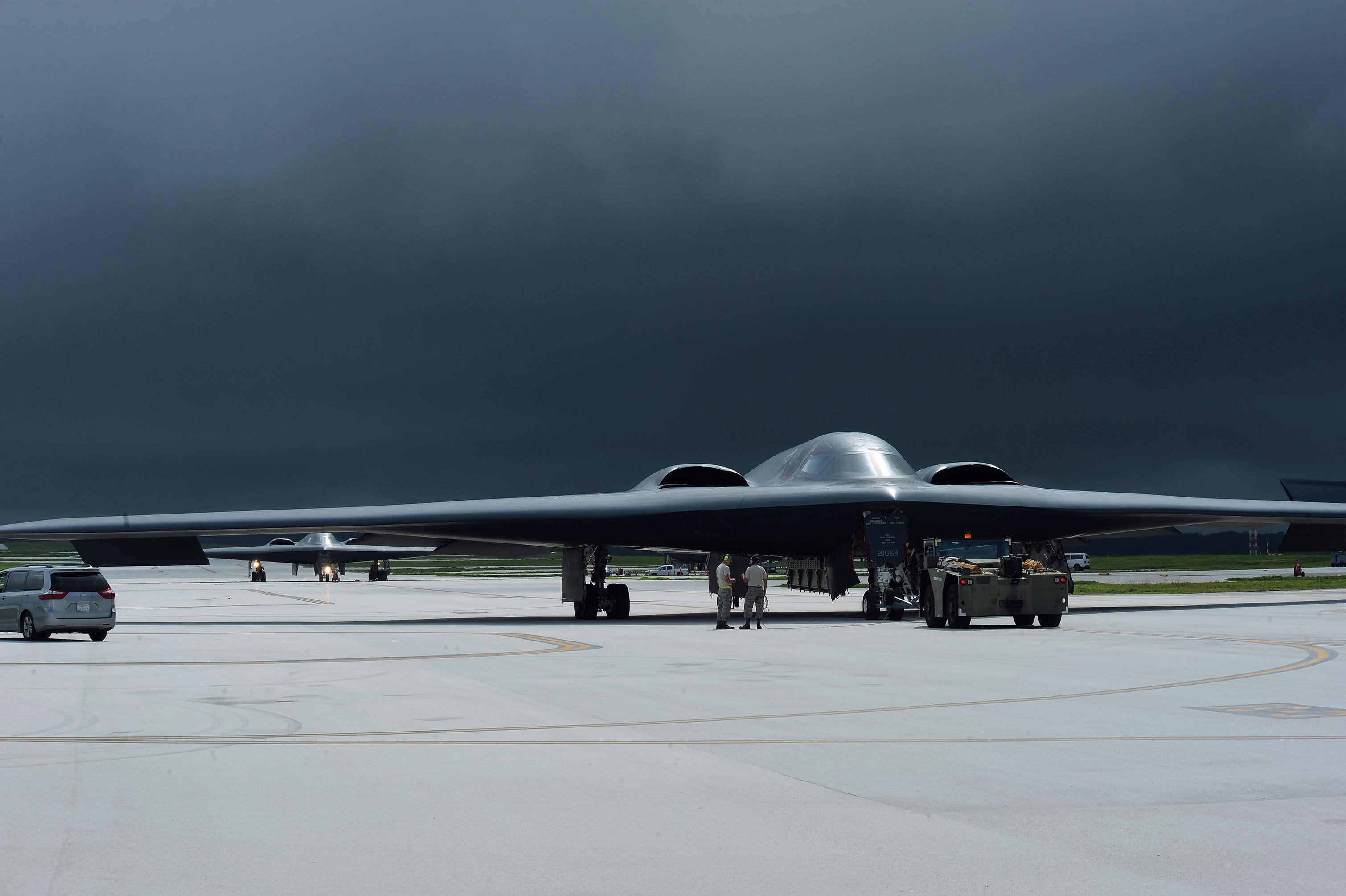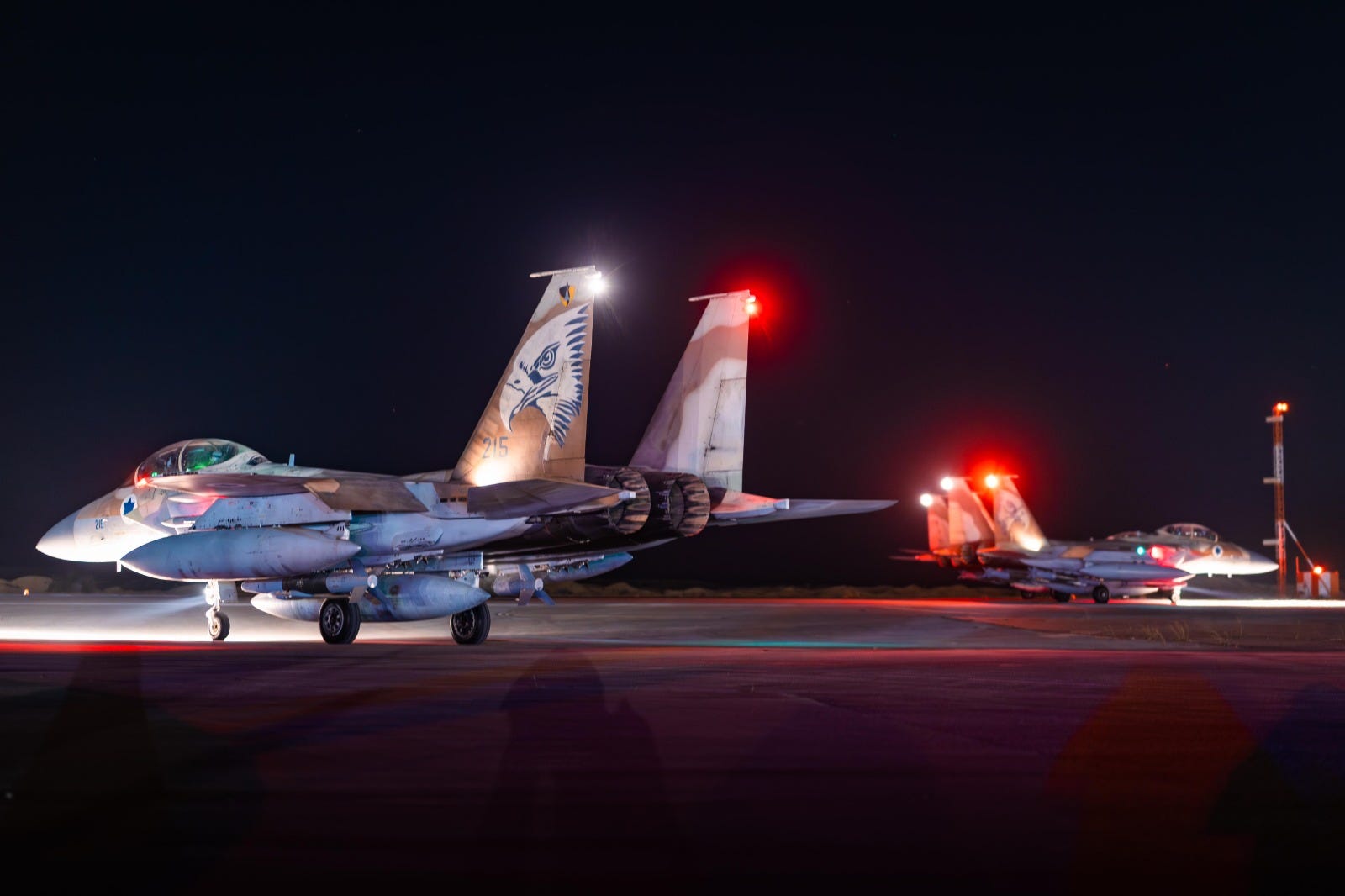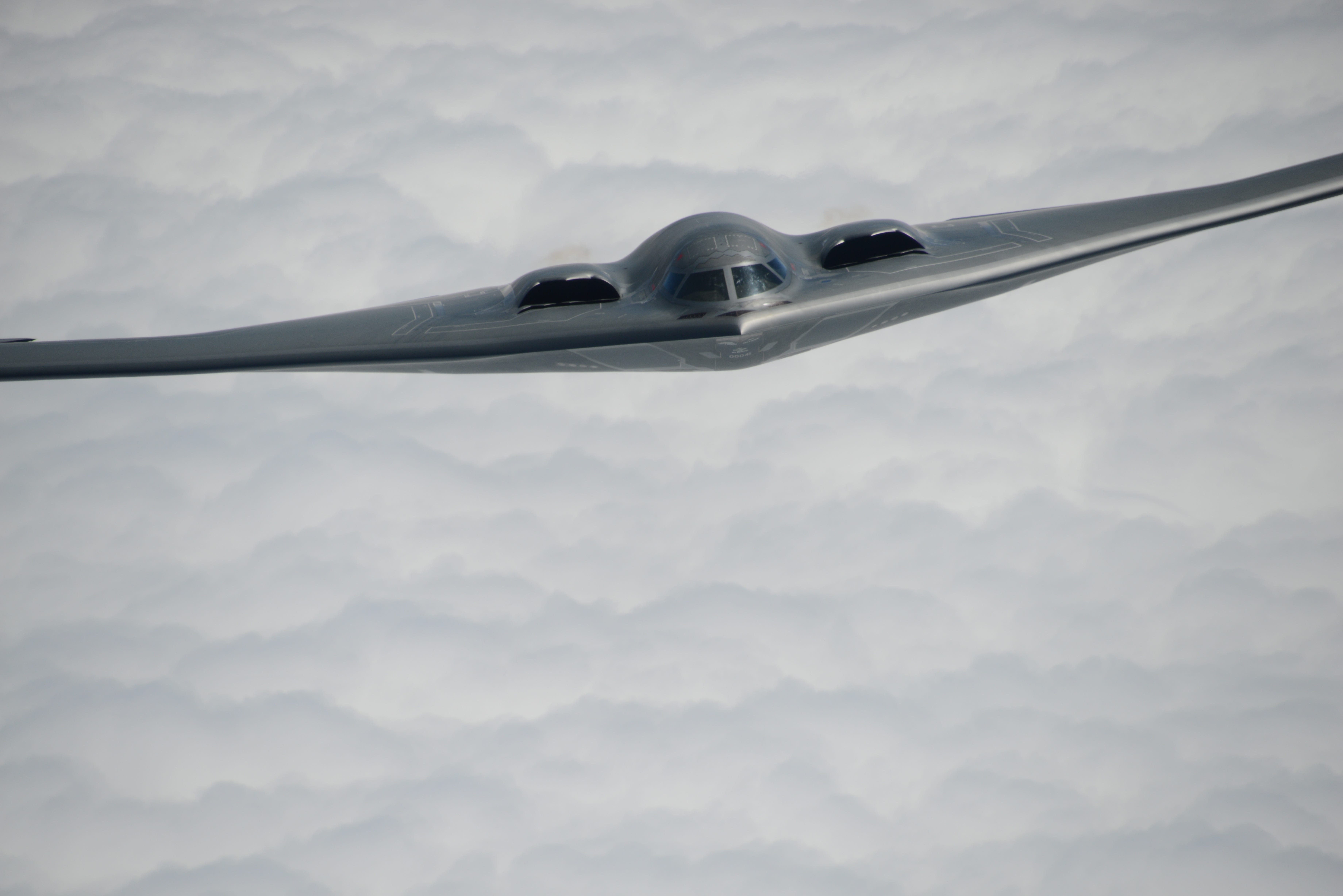
HUM Images/Universal Images Group via Getty Images
The US Air Force’s B-2 Spirit bombers that executed strikes on Iranian nuclear facilities appear to have broken in undetected, the top US general said.
“It appears that Iran’s surface-to-air missile systems did not see us,” Gen. Dan Caine, chairman of the Joint Chiefs of Staff, said on Sunday. “Throughout the mission, we retained the element of surprise.”
The degradation of Iran’s air defense network ahead of and during the US bombing run, the purposeful deception, and the stealth features of the bombers and escort aircraft make that very possible.
The US strike on Iran over the weekend was the largest B-2 operational strike in US history, as seven of these bombers, each with two crew members, flew 18 hours into Iran to drop 14 30,000-pound bunker-buster munitions. It was the second-longest B-2 mission ever flown. Though touted as a major success, its impact on Iran’s nuclear program remains hotly debated.
Stealth bombers

509th Bomb Wing
The Northrop Grumman B-2 Spirit strategic bomber features a unique flying-wing airframe, radar-absorbent materials, edge alignment, and other low-observable technologies that dramatically reduce the aircraft’s radar cross-section across multiple frequency bands, making it difficult for enemy air-defense radars to detect, track, or target.
For an operator, the radar signature might look more like a bird than a 172-feet-wide bomber — if it’s detected at all.
The B-2 was designed in the late Cold War to strike inside the Soviet Union with nuclear weapons without notice. By then, automated flight controls had made the unstable but high-lift flying wing design viable.
The B-2’s design shunts most radar energy, and then the materials handle the rest. Paired with strict radio silence and the ability for low-altitude flight, the aircraft can be extremely tough for hostile surface-to-air missile batteries to detect.
But the B-2s also weren’t operating alone.
Caine, a career Air Force F-16 pilot, shared Sunday that fourth- and fifth-generation fighters, now known to include the F-35 Lightning II Joint Strike Fighter and F-22 Raptor, were part of the mission, sweeping in front of the strike package of bombers for enemy fighter jets and surface-to-air missiles. The mission was also supported by intelligence, surveillance, and reconnaissance aircraft.
Caine said the US was unaware any shots had been fired at the aircraft during their mission.
Weakened enemy defenses

Israel Defense Forces
Tehran’s air defenses include many older surface-to-air missile systems with limited fusion, meaning they aren’t sufficiently integrated in a way that uses the full power of their air defense network to detect and engage threats.
The execution of the operation likely also turned on what came before: Israel destroyed much of Iran’s remaining air defenses in the 10 days leading up to the US strike, leading Israel to declare air superiority over parts of Iran. Many other surface-to-air missile systems were knocked out in previous engagements.
It’s unclear what the specific air defense situation looked alike along the route the B-2s flew toward Fordow and Natanz.
The mountainous topography around facilities like Fordow and Natanz could also create potentially exploitable radar blind spots for Iran’s operable sensors. The timing of the operation, the middle of the night, was also chosen to challenge the response of human operators.
Deception

185th Air Refueling Wing, Iowa Air National Guard
US Secretary of Defense Pete Hegseth said the B-2s flew to the “nuclear sites in and out and back without the world knowing at all,” highlighting deception efforts and communications silence that kept the mission secret.
President Donald Trump had signaled that he would take two weeks to decide on whether the US would strike Iran, and then the hit came just days later. That, however, wasn’t the only deception.
“As part of a plan to maintain tactical surprise, part of the package proceeded to the west and into the Pacific as a decoy,” Caine explained on Sunday, calling it “a deception effort known only to an extremely small number of planners and key leaders here in Washington and in Tampa.” Additional decoy aircraft were used as the bombers entered Iranian airspace, he said.
Although Trump has called the strikes a smashing success, it remains unclear whether Iran could still build nuclear weapons in the near future. The status of Iran’s critical technologies and the whereabouts of its highly enriched uranium are unknown, and most of its nuclear scientists are believed to have been evacuated well ahead of the strikes.
The American strikes on the nuclear facilities came after Israel launched a new operation aimed at degrading Iran’s nuclear program earlier this month.
While the Trump administration had preferred pursuing a diplomatic approach, trying to reach a new nuclear deal with Iran, Israel opted for violence, conducting far-reaching military action against Tehran’s nuclear facilities, top scientists, senior commanders, and air defenses. The US then joined those efforts with a tremendous display of force.
The post The top US general says Iran likely never saw the B-2 bombers that hit its nuclear sites. Here’s why they might have gone undetected. appeared first on Business Insider.




